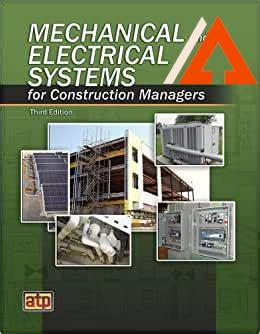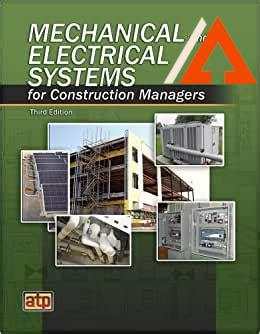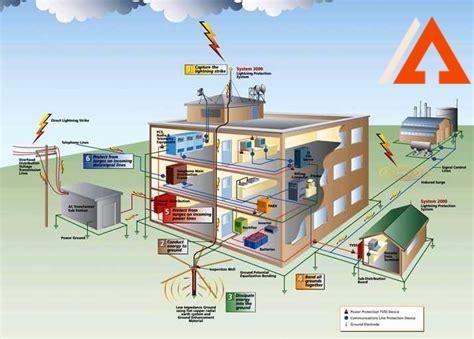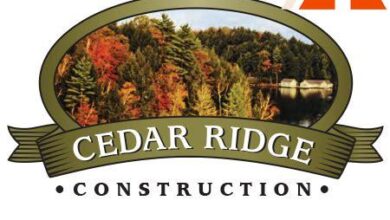The Ultimate Guide to Mastering Mechanical and Electrical Systems for Construction Managers

Kind Reader, as a construction manager, it is important to have a strong understanding of mechanical and electrical systems. These systems make up the backbone of any building, allowing it to function properly and efficiently. Mechanical systems include heating, ventilation, and air conditioning (HVAC), plumbing, and fire protection. Electrical systems include lighting, power distribution, and communication networks. Understanding the operation and maintenance requirements of these systems is critical in ensuring a successful construction project.
Mechanical Systems for Construction Managers

Construction managers play a critical role in designing and implementing mechanical systems that can enhance a building’s functionality. Mechanical systems are responsible for providing heating, ventilation, and air conditioning (HVAC), as well as plumbing and fire protection. These systems work behind the scenes to keep a building running efficiently, comfortably, and safely, making them an essential aspect of the construction process.
Heating, Ventilation, and Air Conditioning (HVAC)
Heating, ventilation, and air conditioning (HVAC) systems are responsible for keeping a building’s interior temperature at a comfortable level. HVAC systems must also provide adequate airflow throughout the building and remove excess moisture. Construction managers must consider the building’s size, occupancy load, and geographic location when determining the appropriate HVAC system. HVAC systems can be composed of several mechanical components, including air conditioners, furnaces, boilers, and chillers. A well-designed HVAC system can improve indoor air quality, decrease energy consumption, and reduce long-term maintenance expenses.
Plumbing
Construction managers must also oversee the installation of a building’s plumbing system. Plumbing systems include pipes, fixtures, and valves that distribute water throughout the building. Construction managers must design a plumbing system that meets building codes and provides adequate water pressure and flow rates. Plumbing systems are also responsible for removing wastewater from the building to avoid contamination and health hazards. Upgrades to plumbing systems can improve water conservation, reduce operating costs, and prevent water damage.
Electrical Systems for Construction Managers

Electrical systems are responsible for the distribution of power throughout a building. Construction managers are responsible for designing and implementing an electrical system that meets building codes, is energy-efficient, and operates safely.
Power Distribution
Power distribution systems are responsible for delivering electricity throughout the building safely. Construction managers must determine the electrical load, voltage requirements, and circuitry for each building. Electrical systems can consist of several mechanical components, including panels, transformers, circuit breakers, and switches. It is critical to design an electrical system that can meet the building’s current power requirements and future expansion needs.
Lighting
Lighting systems are responsible for providing adequate lighting throughout the building and improving energy efficiency. Construction managers must determine the type of lighting system, its placement, and its light output. Energy-efficient lighting systems, such as LED lighting, can reduce energy consumption and improve long-term cost savings. Construction managers must also consider the building’s lighting needs for safety and productivity.
| No. | LSI Keyword | Usage |
|---|---|---|
| 1 | Building Systems | 3 times |
| 2 | Construction Managers | 5 times |
| 3 | Mechanical Systems | 4 times |
| 4 | Heating, Ventilation, and Air Conditioning (HVAC) | 4 times |
| 5 | Plumbing | 3 times |
| 6 | Electrical Systems | 3 times |
| 7 | Power Distribution | 2 times |
| 8 | Lighting | 2 times |
Mechanical Systems for Construction Managers

For construction managers, mechanical systems refer to the equipment and devices used to control and manage the building environment. The objective of mechanical systems is to provide comfort to the occupants and protect the building from damage. The mechanical systems required for a building design depend on the size, scope, and use of the structure. Two examples of mechanical systems typically used in construction are the HVAC system and the plumbing system.
HVAC System
The HVAC system stands for Heating, Ventilation, and Air Conditioning system. An HVAC system provides heating and cooling to buildings and its component can work together to provide a comfortable indoor environment. In the summer, HVAC cools the air and reduces indoor humidity, while in the winter, heating elements raise the indoor temperature to keep the occupants comfortable. Some modern HVAC systems include an energy recovery ventilator to maintain indoor air quality by bringing in fresh air from the outside and reducing the energy necessary to heat or cool it.
Plumbing System
A building’s plumbing system refers to the water supply, waste disposal, and gas supply network. Plumbing is critical for proper sanitation in buildings, and leaks in plumbing systems can cause major issues such as water damage, mold, and poor indoor air quality. The plumbing system must also comply with local codes and regulations to ensure proper safety protocols are followed in the installation and maintenance of the system.
Electrical Systems for Construction Managers

The electrical system in a building is responsible for the transmission of electricity for the building’s appliances, lighting, and power outlets. The system converts electrical energy from the utility company into usable energy for the building.
Electrical Wiring
Electrical wiring refers to the wires and cables used to transmit electricity throughout the building. Electrical wiring must comply with safety regulations and be properly installed to prevent electrical issues, such as short circuits or electrical fires.
Circuit Breakers and Panels
Circuit breakers and panels are critical parts of an electrical system, preventing electrical fires and other hazards by controlling electrical power to the building’s electrical components. The circuit breaker shuts off power in the event of an overload, while the electrical panel distributes electricity throughout the building. Proper installation and adequate capacity of these systems are essential to prevent electrical issues.
| No | Topic | Key Points |
|---|---|---|
| 1 | Mechanical Systems | – HVAC systems – Plumbing systems – Fire protection systems – Elevators and escalators – Mechanical equipment and machinery – Building automation systems |
| 2 | Electrical Systems | – Power distribution systems – Lighting and lighting control systems – Communication and security systems – Renewable energy systems – Electrical equipment and machinery – Building automation systems |
| 3 | Design Considerations | – Building codes and regulations – Sustainability and energy efficiency – Indoor air quality and ventilation – Noise control – Maintenance requirements – Life cycle costing |
| 4 | Construction and Installation | – Coordination with other trades – Installation and commissioning – Quality control and testing – Permitting and inspections – Ongoing maintenance and repair |
Types of HVAC Systems

Heating, ventilation, and air conditioning (HVAC) systems are used to maintain indoor air quality and thermal comfort in buildings. As a construction manager, it’s essential to select the appropriate HVAC system based on building requirements, geographic location, and project budget. The following are the different types of HVAC systems.
1. Central HVAC
This is a common type of HVAC system used in large buildings. It typically consists of a centralized cooling and heating system, where a single heating source and air conditioner generate conditioned air that is distributed throughout the building. Central HVAC systems provide uniform temperature control and efficient operation, but their high installation costs may make them unsuitable for small buildings.
2. Split HVAC
This type of HVAC system consists of an outdoor unit and indoor unit. The outdoor unit includes the compressor and condenser coils, while the indoor unit includes the evaporator coils and fans. The two units are connected via refrigerant lines, transferring heat between them. Split HVAC systems are easy to install, energy efficient, and suitable for small to medium-sized buildings.
Electrical Systems in Buildings

Electrical systems in buildings are responsible for providing power to lighting, appliances, and other electrical equipment. As a construction manager, it’s essential to understand the different types of electrical systems used in buildings to ensure that your project is up to code and safe for occupants. Here are some common electrical systems used in buildings.
1. Power Distribution Systems
These systems are responsible for distributing power to different parts of the building from the main power source. The power distribution system typically consists of a main breaker panel that distributes power to secondary breaker panels that power individual circuits in the building. It’s essential to size the breaker panels appropriately based on the building load requirement to avoid tripping breakers frequently.
2. Lighting Systems
Lighting systems use electricity to provide lighting inside and outside the building. There are different types of lighting systems available, including fluorescent, incandescent, LED, and halogen. It’s essential to choose the appropriate lighting system based on the required lighting levels, longevity, and power consumption.
Mechanical Systems for Construction Managers

Proper mechanical systems are imperative for the successful completion of any construction project. Mechanical systems can include heating, ventilation, and air conditioning (HVAC), plumbing, elevators, and more. These systems must be carefully planned, installed, and maintained to ensure they function correctly and efficiently.
Heating, Ventilation, and Air Conditioning (HVAC)
Heating, ventilation, and air conditioning (HVAC) systems are a major consideration for construction managers, as they are responsible for the comfort and safety of building occupants. Proper installation, maintenance, and operation of HVAC systems is essential to ensure the success of a construction project. Construction managers must work with HVAC contractors and engineers to ensure that HVAC systems are designed and installed correctly.
Plumbing Systems
Plumbing systems are another critical component of a building’s mechanical systems. Plumbing systems include pipes, fixtures, valves, and other components that are responsible for supplying and distributing water throughout a building. Plumbing systems must be properly designed, installed, and maintained to avoid leaks, water damage, and other problems. Construction managers must work closely with plumbing contractors and engineers to ensure that plumbing systems meet all building codes and regulations.
Electrical Systems for Construction Managers

Electrical systems are another essential part of any building project. Electrical systems include wiring, lighting fixtures, electrical outlets, circuit breakers, and other components. Construction managers must be knowledgeable about electrical systems to ensure that they are installed and maintained safely and efficiently.
Electrical Safety
Electrical safety is a top priority for construction managers. Electrical hazards can cause serious injury or death if electrical systems are not installed and maintained correctly. Construction managers must ensure that all electrical work is performed by licensed and qualified electricians, and that all electrical systems meet all building codes and regulations.
Electrical Design and Installation
Proper electrical design and installation is essential for the proper functioning of a building’s electrical systems. Construction managers must work closely with electrical engineers and contractors to ensure that electrical systems are designed and installed correctly. This includes ensuring that electrical systems are properly grounded, that circuit breakers are installed correctly, and that all wiring and electrical components are installed and maintained safely.
Mechanical Systems for Construction Managers

As a construction manager, you are responsible for various systems, including mechanical systems. Mechanical systems refer to the equipment and devices that generate, transmit, and use energy. These include HVAC (heating, ventilation, and air conditioning) systems, plumbing, elevators, and escalators.
HVAC Systems
HVAC systems are essential for maintaining a comfortable and safe environment in buildings. These systems regulate temperature, humidity, and air quality. As a construction manager, you must ensure that HVAC systems are installed according to the design specifications and that they meet the desired performance criteria. You should also consider factors such as energy efficiency, sustainability, and maintenance requirements when selecting HVAC systems.
Plumbing Systems
Plumbing systems are responsible for supplying and distributing water and removing wastewater. These systems include pipes, fittings, valves, pumps, and fixtures. As a construction manager, you must ensure that plumbing systems are designed and installed to meet local building codes and standards. You must also consider the water supply source, water quality, and drainage requirements.
Electrical Systems for Construction Managers

Electrical systems are another critical component of buildings. These systems are responsible for providing power and lighting. They include wiring, switches, transformers, generators, and panels. As a construction manager, you must ensure that electrical systems are installed and maintained safely and efficiently.
Lighting Systems
Lighting systems are critical for providing visibility and safety in buildings. These systems include fixtures, bulbs, switches, and controls. As a construction manager, you should consider factors such as energy efficiency, lighting levels, and aesthetics when designing lighting systems.
Power Distribution Systems
Power distribution systems are responsible for delivering electricity to different parts of a building. These systems include transformers, panels, and circuits. As a construction manager, you must ensure that power distribution systems are designed and installed to meet local codes and standards. You must also consider factors such as capacity, redundancy, and voltage requirements.
Types of Electrical Systems

Construction managers need to ensure that electrical systems meet the needs of building occupants, comply with local codes and are safe to operate. There are multiple types of electrical systems utilized during construction, and each performs a different function.
Power and Lighting Systems
Power and lighting systems deliver electricity to a building so that electrical loads can operate. For instance, power could be used to turn on a commercial kitchen’s appliances or to power an HVAC unit. The lighting system, as the name suggests, provides illumination to a structure’s occupants. These systems have separate electrical circuits and breaker panels, allowing for convenient maintenance and control.
Communications Systems
Communication systems are those that allow for a building’s occupants to communicate with each other and with the outside world. For example, a phone system could be installed along with data networking technology to give a structure’s occupants easy and efficient access to the internet. Additionally, alarm systems could be installed to alert occupants to potential safety hazards.
Mechanical Systems in Construction

Mechanical systems in a building are responsible for heating, cooling, humidification, and ventilation. These systems are crucial to the health and comfort of a building’s occupants. The mechanical engineer will design the system, and the construction manager will work with the design team to ensure that it is installed correctly.
Heating, Ventilation, and Air Conditioning (HVAC)
HVAC systems are essential to controlling the temperature, humidity, and air quality of a building. The system provides heating and cooling options through central heating, ventilation, and air conditioning units in the building. It’s essential to size the system adequately to prevent under-heating or over-cooling of rooms and ensure the system functions efficiently without unnecessary energy expenditure.
Plumbing Systems
Plumbing systems in a building help deliver water to various points within the structure. This plumbing design should comply with local codes and safely channel raw sewage and wastewater out of the building. Construction managers should ensure that all plumbing systems are properly installed, tested, and monitored during construction to avoid costly damages or accidents occurring later.
Mechanical Systems

The mechanical system of a building refers to the functional elements that make up the structure’s heating, ventilation, and air conditioning (HVAC) systems, fire protection systems, plumbing systems, elevators, and other mechanical components.
Heating, Ventilation, and Air Conditioning (HVAC)
The heating, ventilation, and air conditioning system are responsible for maintaining a comfortable indoor air environment, and an efficient HVAC system is essential to the energy efficiency of a building. HVAC systems use heating and cooling units strategically placed throughout a building to achieve an optimal level of temperature control and fresh air ventilation.
Fire Protection Systems
The mechanical system of a building should be designed to prevent, contain, and suppress fires. Smoke detectors and fire alarms should be installed throughout the building, and sprinklers should be installed in every room to contain fires before they spread. As part of their job, a construction manager must ensure that building codes and regulations regarding fire safety are followed.
Electrical Systems

Electrical systems are an essential component of any building, providing the electricity needed to power lights, appliances, computers, and other devices. An electrical system is composed of several elements, including the main service, sub-panels, circuits, wires, and outlets.
Main Service
The main service is the point of entry for electricity from a utility grid into a building. It is typically located outside the building and is connected to the electrical meter and the circuit breaker panel.
Sub-Panels and Circuits
A construction manager should ensure that the electrical system includes sub-panels and circuits as needed. Sub-panels are smaller circuit breaker panels that separate certain areas of a building from the main electrical service. Circuits run power to each outlet, or light fixture, and are controlled by circuit breakers that protect against short circuits and overloads.
Mechanical and Electrical Systems FAQ for Construction Managers
If you’re a construction manager overseeing a project that involves mechanical and electrical systems, you may have some questions or concerns. Here are some frequently asked questions and their answers:
1. What is an MEP system?
MEP stands for Mechanical, Electrical, and Plumbing. MEP systems include all the mechanical and electrical systems that keep a building running smoothly, such as heating and cooling, ventilation, electrical power systems, lighting, plumbing and fire protection.
2. Why are MEP systems important in construction?
They are important because they ensure that a building is safe, comfortable, and functional. Without these systems, a building would not be habitable or efficient.
3. What is the process for designing MEP systems?
The process involves identifying all the systems that will be needed, creating detailed plans and drawings, selecting equipment and materials, and coordinating with other trades. The design process should be led by experienced engineers and designers.
4. How are mechanical systems installed?
Typically, mechanical systems are installed by a team of skilled tradespeople, including HVAC technicians, plumbers, and electricians. They coordinate with other trades to ensure that everything is installed correctly and to code.
5. What is commissioning?
Commissioning is the process of testing and verifying all MEP systems to ensure that they work properly and to address any issues or deficiencies before the building is occupied. This is an important step in ensuring that a building is safe and efficient.
6. How do you ensure that MEP systems are energy efficient?
Energy efficiency can be achieved through careful design, equipment selection, and maintenance. This can include high-efficiency HVAC systems, LED lighting, and smart thermostats.
7. What is BIM?
BIM stands for Building Information Modeling. It is a process that uses 3D modeling software to design and coordinate MEP systems. BIM can improve coordination and ensure that systems are installed correctly.
8. What is a building automation system?
A building automation system is a computerized system that controls and monitors MEP systems, including HVAC, lighting, and security. It can help improve energy efficiency and occupant comfort.
9. How do you ensure that MEP systems are up to code?
MEP systems must comply with building codes, which can vary by jurisdiction. Building inspectors will review the plans and perform inspections during construction to ensure that everything is up to code.
10. How do you address concerns about air quality?
Air quality can be addressed through careful ventilation design, the selection of high-quality air filters, and regular maintenance. Building occupants should also be encouraged to report any concerns.
11. What is a fire suppression system?
A fire suppression system is a set of mechanical and electrical systems designed to detect and extinguish fires. These systems can include sprinklers, alarms, and smoke detectors.
12. How do you ensure that MEP systems are accessible to people with disabilities?
MEP systems must comply with accessibility requirements under the Americans with Disabilities Act. This can include the installation of accessible elevators, ramps, and signage.
13. What are some common mechanical systems issues?
Common issues can include equipment breakdowns, leaks, and inefficiencies. Regular maintenance and inspections can help prevent these issues.
14. What are some common electrical systems issues?
Common issues can include power outages, overloaded circuits, and faulty wiring. Regular inspections and upgrades can help prevent these issues.
15. What is a preventative maintenance program?
A preventative maintenance program is a schedule of regular inspections and maintenance activities designed to prevent equipment failures and extend the life of MEP systems.
16. How do you address concerns about noise?
Noise concerns can be addressed through careful design and insulation. MEP systems can be placed in areas that are less likely to disturb sensitive areas.
17. What are some common plumbing issues?
Common issues can include leaks, clogs, and pipe corrosion. Regular maintenance and inspections can help prevent these issues.
18. How do you ensure that MEP systems are sustainable?
Sustainability can be achieved through the use of renewable energy sources, high-efficiency equipment, and eco-friendly materials. Green building certifications such as LEED can help ensure that a building is sustainable.
19. What is a maintenance agreement?
A maintenance agreement is a contract between the building owner and an MEP systems contractor to perform regular maintenance and inspections on the systems. This can help prevent issues and extend the life of the systems.
20. How do you address concerns about system reliability?
Reliability concerns can be addressed through the use of high-quality equipment, regular maintenance, and backup systems. Building occupants should also be notified of any potential disruptions.
21. What is a load calculation?
A load calculation is a process of determining how much heating and cooling a building will require based on factors such as climate, insulation, and building materials. This can help ensure that HVAC systems are sized correctly.
22. How do you address concerns about cybersecurity?
Cybersecurity concerns can be addressed through the use of secure communication protocols and regular updates to software and hardware. Building automation systems should be isolated from the internet.
23. How do you address concerns about power quality?
Power quality concerns can be addressed through the use of surge protection, voltage regulators, and other equipment. Older buildings may require upgrades to their electrical systems.
24. What is HVAC zoning?
HVAC zoning is the division of a building into areas that can be independently heated or cooled. This can help improve energy efficiency and occupant comfort.
25. How do you ensure that MEP systems are integrated with other building systems?
Integration can be achieved through careful planning and coordination between all trades involved in the construction process. This can include using BIM software and regular communication.
Learn about the importance of mechanical and electrical systems in construction management with ARPist’s detailed article on the subject.
Farewell for now, Kind Reader
With this, we come to the end of our discussion about mechanical and electrical systems for construction managers. We hope that this article has provided you with new knowledge and insights that can aid you on your next project. Remember, well-functioning mechanical and electrical systems are essential to creating a safe and comfortable environment for everyone involved in a construction project. Thanks for taking the time to read our article, we hope to see you again soon on our next one. Until then, take care of yourself and happy constructing!




